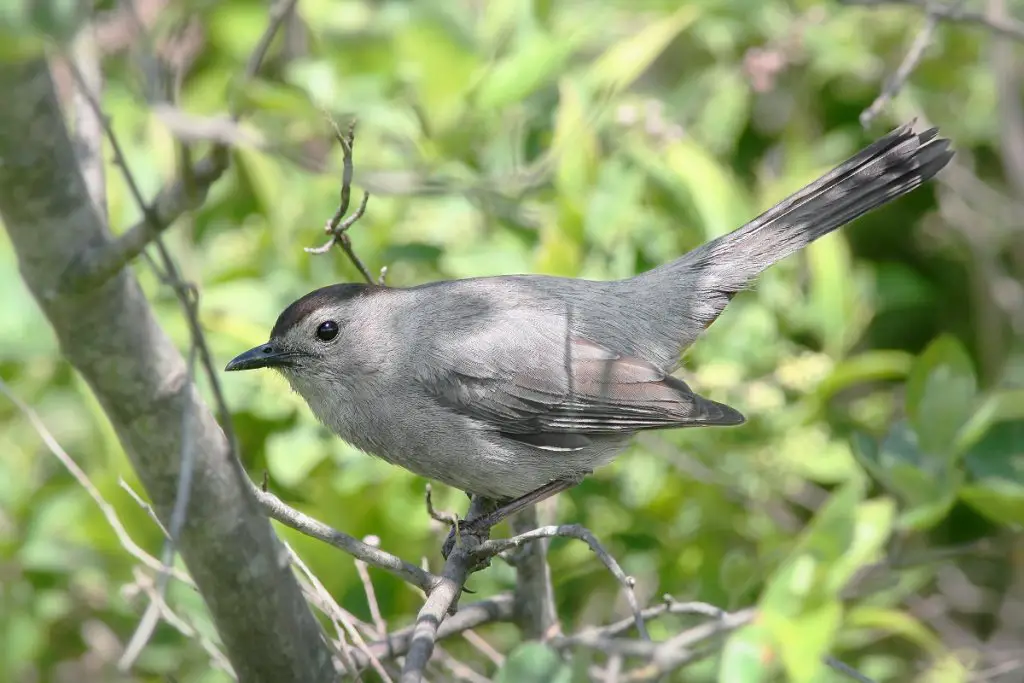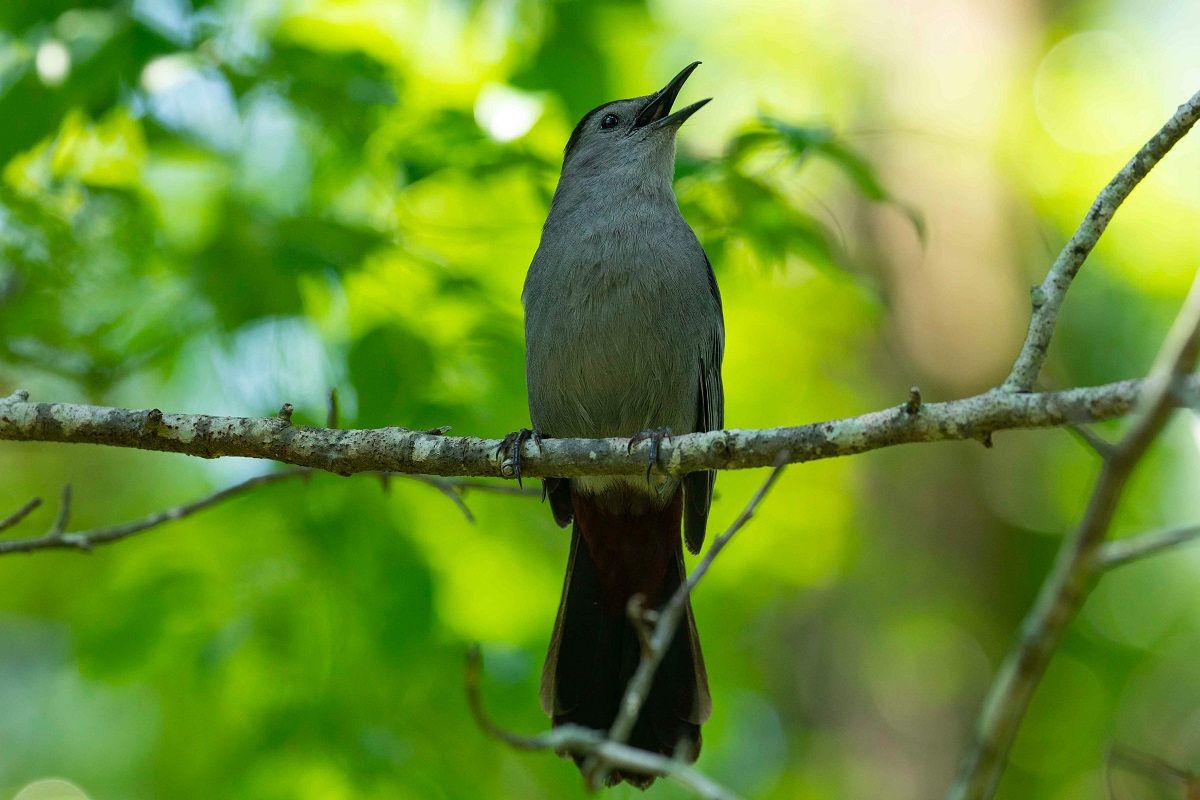Catbirds got their name from their familiar cat-like sound they use to signal danger. Still, it’s not the only way these birds communicate. They are also known for their versatile songs that may mimic part of the melodies of other birds.
Catbird sounds are savvy birds that can mimic the sounds of their nemesis – neighborhood cats – with a mewing call and also deliver a varied melodic sound.
As members of the Mimidae family, gray catbirds can successfully imitate the sounds of many other birds in your garden. They share the ability to string sounds together like others in their extended family.
Gray catbirds can produce many different sounds, some of which don’t even sound like bird songs to the human ear. Additionally, catbirds are mimics (they belong to the family of “mimic thrushes” or “mimids”), just like the northern mockingbird (Mimus polyglottos) and brown thrasher (Toxostoma rufum). All of these will imitate other birds and also include their sounds in the songs.
The Gray Catbird Songbirds Mimicry
The gray catbird ( Dumetella carolinensis) is a master at mimicking bird sounds from many different bird species and sometimes other animals. Males with a wide range of vocalization abilities are especially attractive to females. When they sing multiple songs, females believe they’ve survived multiple breeding seasons.
Catbird song involves long, irregular notes and phrases that might include harsh clucks and squawks, soft whistles and musical notes, whines, gurgles, clicks, squeaks, and bits of other bird songs. The bird may deliver 90 syllables a minute and go on for 10 minutes at a time.
The Mewing Calls
However, the catbird is known for its mewing calls, similar to domestic cats. The catbird call is not an imitation of the cat’s meows. It’s just the part of their song.
Besides chirping, clicking, and other bird calls, catbirds use mewing for other purposes. For example, a male gray catbird uses it to compete with other males. Females may use it when a predator approaches their nest and youngsters. These are the most common sounds, and they’ll help you identify a catbird among other backyard birds.
When catbirds arrive in North America each ear, you’ll hear them call each other out with their known mewing calls. Still, be on the lookout for clicks and clacks. What’s more, if you hear a frog, it might be a catbird’s call. Keep reading to see how they can manage their voices so well.
How Does Catbird Make Multiple Sounds?
Like other songbirds, catbirds have a distinct voicebox. It’s placed deep in the bird’s chest with two separate branches that they control. This is why they can make two noises at the same time. The left branch of the voicebox makes lower, and the right makes higher notes. Carolina wrens have a similar power to “throw” their voices.
What Is the Difference Between Catbird and Mockingbird Songs?
Catbird songs can last up to several minutes and include over a hundred different sounds. One of the differences between a catbird and mockingbird singing is the repetition. The mockingbird will repeat the sequence three times in a row. Catbird will sing it only once, and throw in a meow.
If you get confused over the sound of mockingbirds and catbirds, many HD videos on YouTube cover the differences between these two North American birds. You can also hear a demo of how the catbird sings from the Cornell Lab of Ornithology’s Macaulay library of sounds.

Where To Look For Catbird Sounds?
The scientific name of this bird Dumetella carolinensis means “little thicket,” and that is the type of location where you will find them. If you want to discover where the familiar song comes from, check for catbird nestlings around undergrowth brush, thorn scrub, dense shrubs, or leafy thickets along the edges of woods and streams.
Chances are, you’ll notice the gray catbird hiding with its brood. You’ll recognize it by the reddish undertail, black cap, and catlike mewing. Males may also make defensive sounds to keep you away from the nest.
Other times, you’ll see it out in the open, together with brown-headed cowbirds or yellow-rumped warblers. Just like hummingbirds, catbirds will migrate and spend winter in the southern US, so you may not hear them around until spring.

